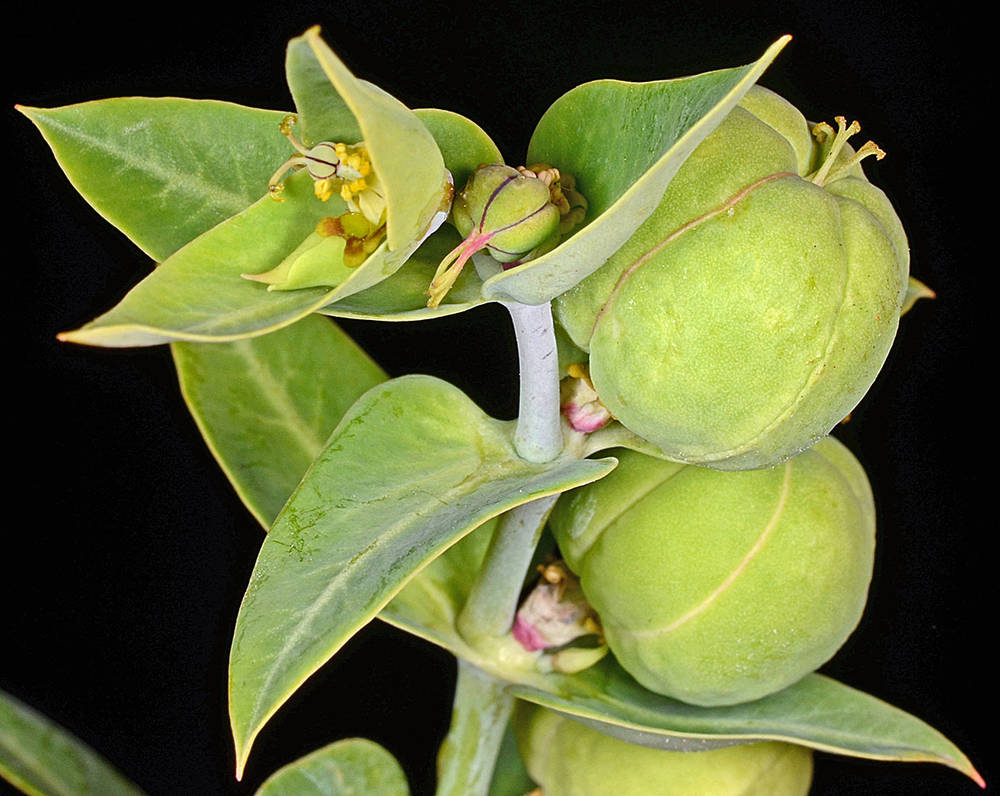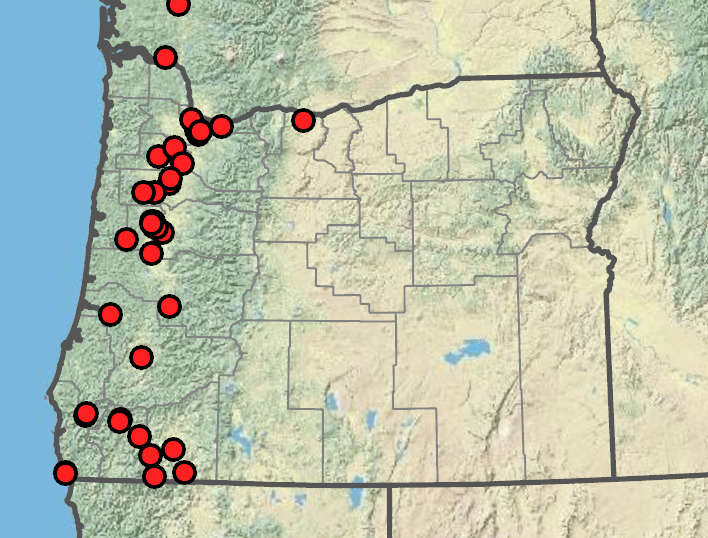Euphorbia lathyris
Euphorbiaceae
caper spurge, gopher plant, mole plant
spurge family
opposite, narrowly oblong to ovate or subcordate, 30–150 × 5–30 mm, bases clasping;
margins entire;
tips acute;
surfaces glabrous.
alternate, subopposite; opposite or whorled; simple;
margins entire or toothed;
petioles present or not;
stipules present or not.
involucres bell-shaped, 2.5–4 mm;
glands 2-horned; horns rounded and short.
various and diverse; in some genera individual flowers reduced and grouped into a bisexual inflorescence resembling a single flower (cyathium);
bracts present or not, sometimes petaloid in appearance.
unisexual, sometimes with a corolla-like involucre;
sepals 0–5;
petals usually 0;
stamens 1–many;
ovaries superior;
styles 3.
spherical, 5–15 mm.
capsules; dry.
round, 4–6 mm, wrinkled or with shallow reticulate markings.
1 per chamber.
Euphorbia lathyris
Euphorbiaceae
Disturbed areas. Flowering May–Jul. 0–500 m. Col, CR, Est, Sisk, WV. CA, ID, WA; scattered across North America; Asia, Europe. Exotic.
Euphorbia lathyris is our only member of the genus to have only opposite leaves. It is sometimes planted in gardens based on the unsubstantiated belief it may deter moles and gophers.
Worldwide. ~300 genera; 3 genera treated in Flora.
Mercurialis annua has been collected on ballast in Portland and rarely as a garden waif. The plants and seeds of many species in Euphorbiaceae are toxic and highly poisonous to animals. The milky sap of Chamaesyce and Euphorbia species contains chemicals that help protect the plants from herbivory and can be very irritating to skin and eyes.
Stephen Meyers
- Local floras:
BC,
CA,
OR,
WA
- Local Web sites:
CalFlora,
CalPhotos,
Flora NW,
PNW Herbaria
WildflowerSearch
iNaturalist (observations)
USDA Plants Database
- LBJ Wildflower Center
- SEINet
- Plants of the World Online
- Encyclopedia of Life
- Wikipedia
- Google Image Search
- Local floras:
CA,
OR
- Local Web sites:
CalFlora,
CalPhotos,
Flora NW,
PNW Herbaria
WildflowerSearch
iNaturalist (observations)
- LBJ Wildflower Center
- SEINet
- Plants of the World Online
- Encyclopedia of Life
- Wikipedia
- Google Image Search



